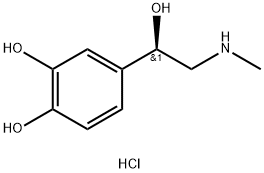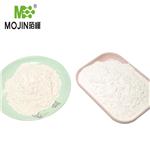Crystals. Used medically as a cardiostimulant.
L-Epinephrine hydrochloride is readily destroyed by alkalis and oxidizing agents .
SYMPTOMS: Adverse reactions include restlessness; anxiety; headache; tremor; weakness; dizziness; pallor; respiratory difficulties; palpitation; nausea and vomiting.
Flash point data for L-Epinephrine hydrochloride are not available, but L-Epinephrine hydrochloride is probably combustible.
By stimulating vascular alpha-adrenergic receptors, epinephrine causes vasoconstriction, thereby increasing vascular resistance and blood pressure. When administered in the conjunctiva, Epinephrine Hydrochloride binds to alpha-adrenergic receptors in the iris sphincter muscle, resulting in vasoconstriction, a decrease in the production of aqueous humor, and a lowering of intraocular pressure. Through its beta1 receptor-stimulating actions, epinephrine increases the force and rate of myocardial contraction and relaxes bronchial smooth muscle, resulting in bronchodilation.
Epinephrine Hydrochloride is the hydrochloride salt of the naturally occurring sympathomimetic amine with vasoconstricting, intraocular pressure-reducing, and bronchodilating activities.



